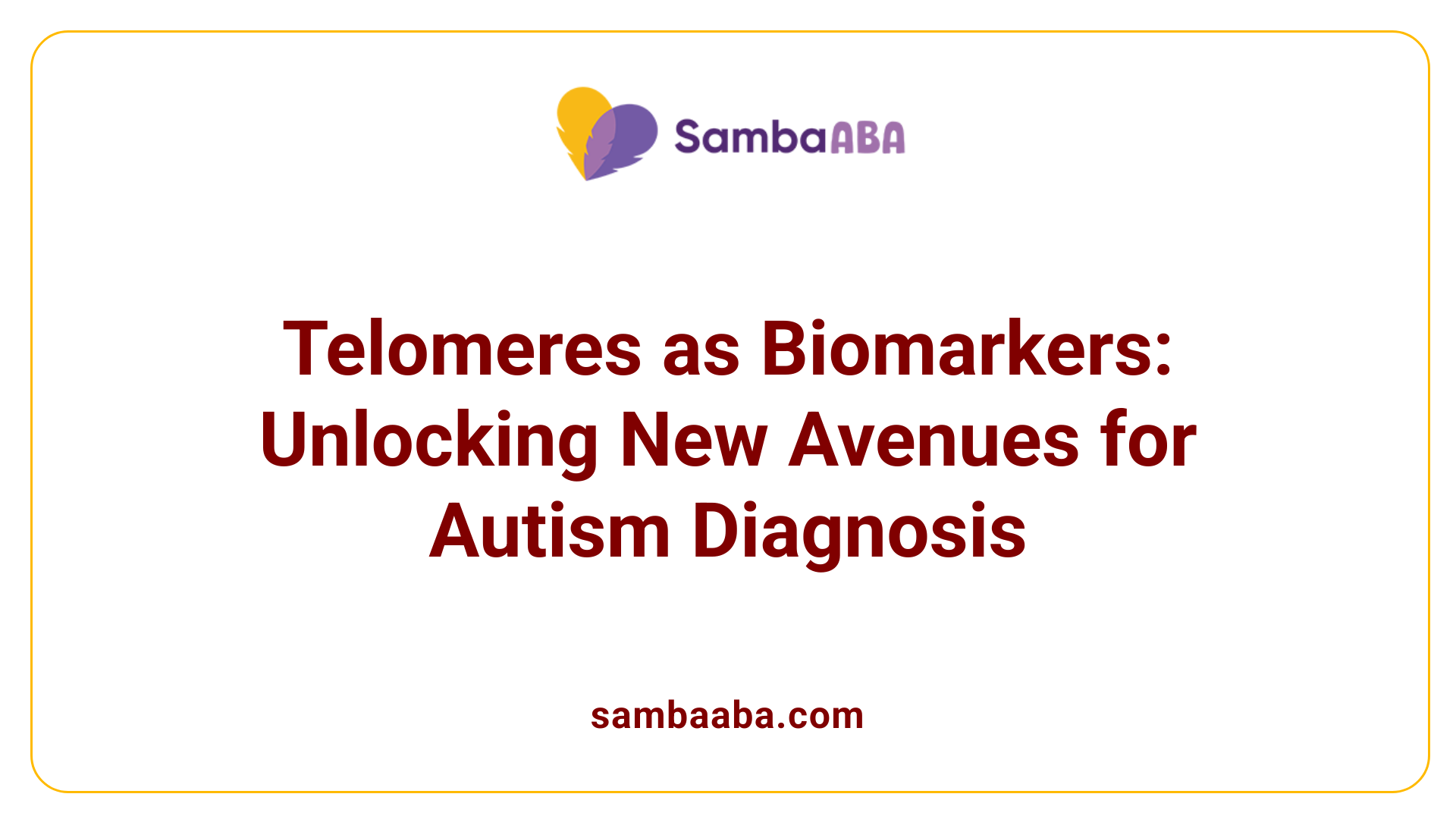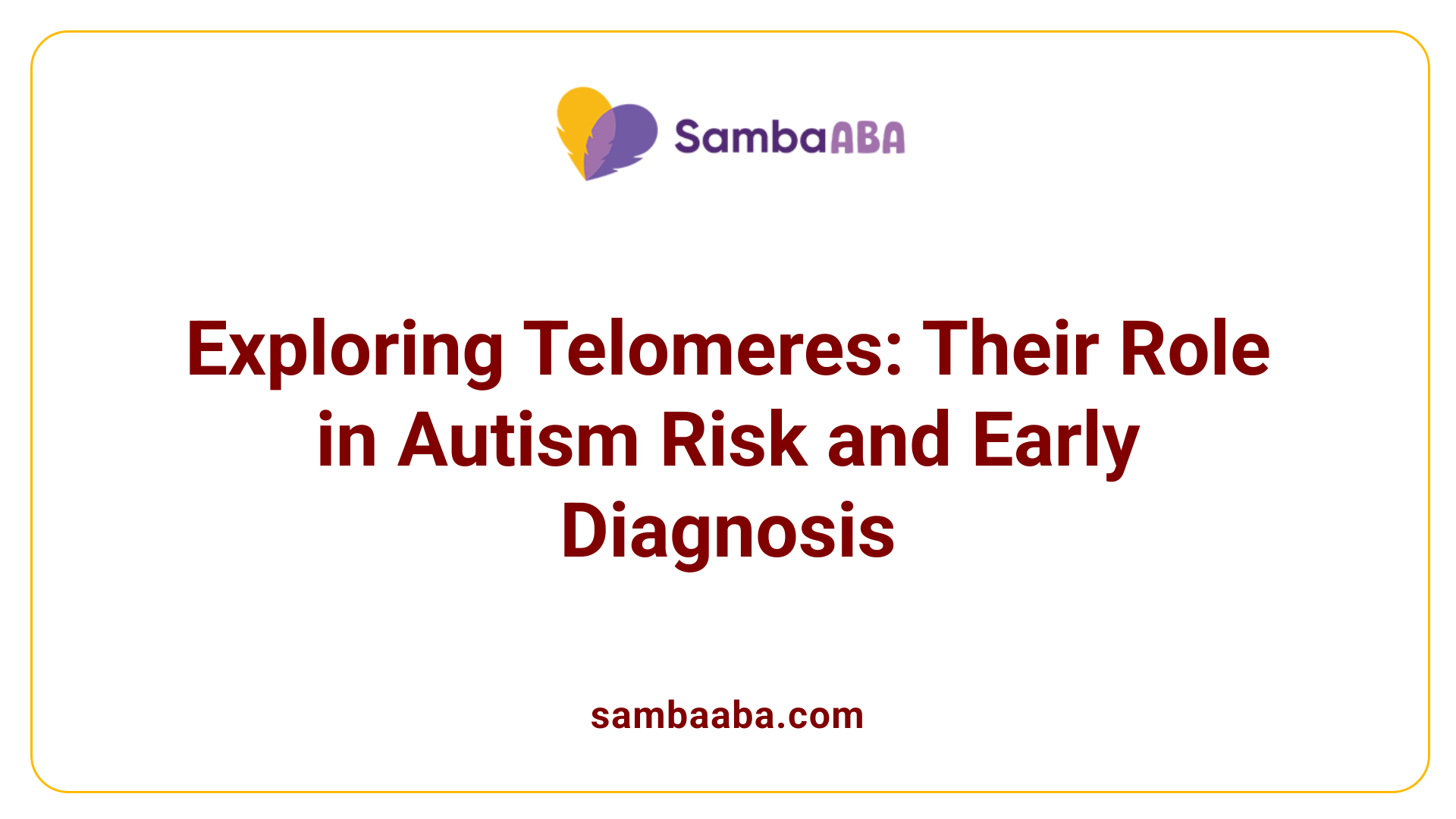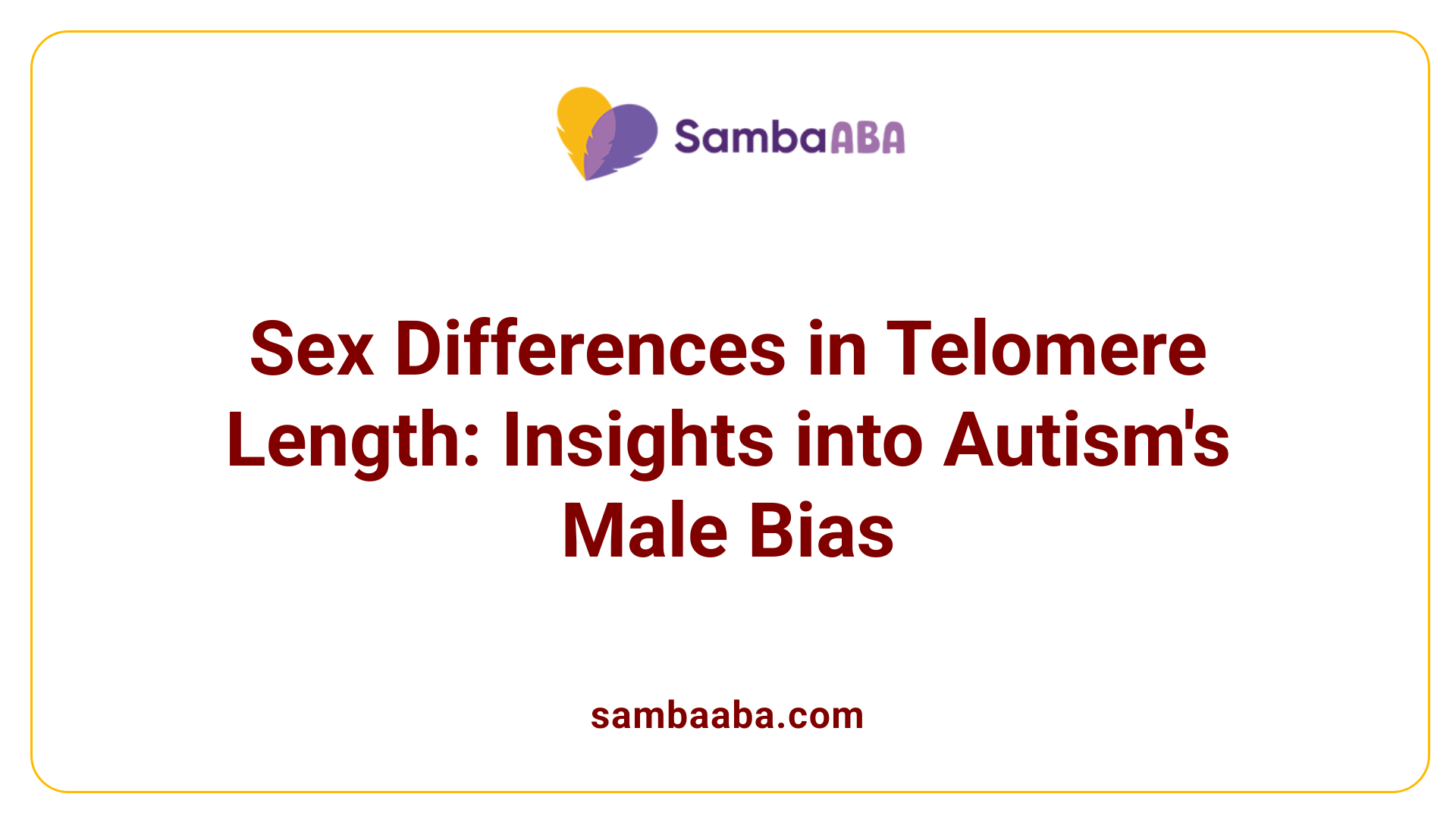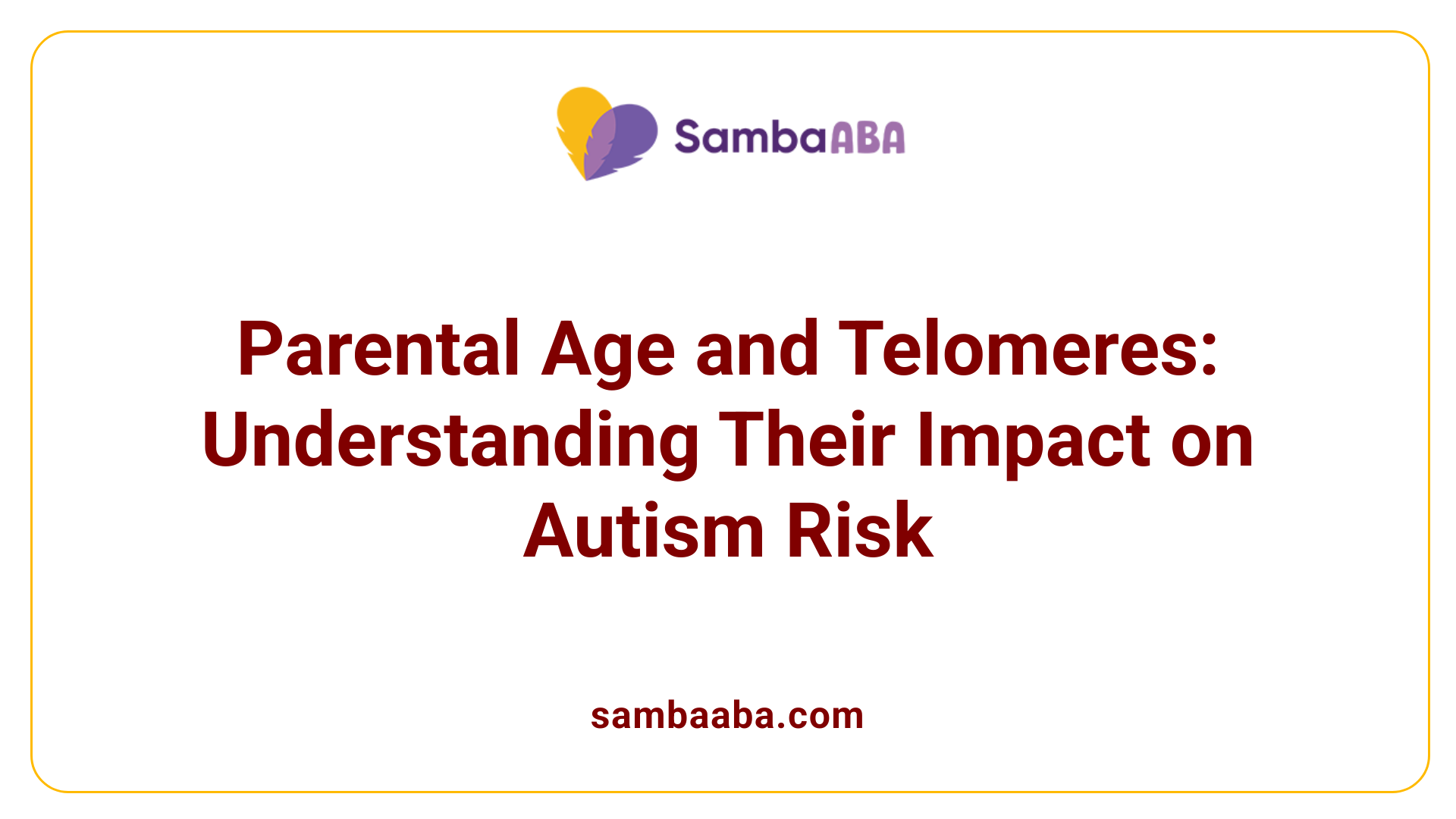Telomere And Autism
Unlocking Biological Clues: The link between telomeres and autism spectrum disorder
Understanding the Biological Markers in Autism
Recent scientific research has shed light on the potential role of telomeres in autism spectrum disorder (ASD). These protective chromosome cap structures not only serve as markers of cellular aging but also reveal insights into the biological processes associated with autism. This article explores the complex relationships between telomere biology, oxidative stress, genetic factors, and environmental influences, providing a comprehensive overview of this emerging research area.
The Connection Between Telomere Length and Autism
What is the relationship between telomeres and autism?
Research shows a significant link between telomere length (TL) and autism spectrum disorder (ASD). Multiple studies indicate that children with autism tend to have shorter telomeres compared to their typically-developing peers. This shortening of telomeres, which are protective caps at the ends of chromosomes, reflects accelerated biological aging and cellular stress.
Families affected by ASD often display shorter telomeres across multiple members. For example, children, mothers, and even high-risk infants in families with an ASD diagnosis exhibit reduced telomere length. These findings suggest that genetic and environmental factors influencing telomere dynamics could contribute to autism susceptibility.
Biological stress, including oxidative stress and DNA damage, is common in individuals with ASD and can accelerate telomere shortening. Markers such as 8-hydroxy-2′-deoxyguanosine (8-OHdG), indicating oxidative DNA damage, are elevated in ASD patients, further implicating oxidative stress in telomere attrition.
Genetic variations, particularly in genes involved in telomere maintenance like TERT, have also been linked to autism. Such mutations may impair telomere elongation processes, increasing vulnerability to cellular aging and neurodevelopmental issues.
Overall, telomere length offers promising potential as a biomarker for ASD risk. Monitoring familial telomere dynamics along with stress-related factors could improve early identification and understanding of autism’s biological underpinnings.
Familial telomere length differences
Studies highlight that families with an autistic child show shorter telomeres compared to families without ASD history. Infants, siblings, and parents in high-risk families demonstrate significant telomere shortening, which may reflect inherited genetic vulnerabilities and environmental influences such as stress and toxins.
Correlation with ASD severity
Shorter telomeres have been associated with more severe autism symptoms, including social communication impairments and behavioral challenges. This correlation suggests that telomere biology might influence neurodevelopmental pathways related to ASD.
Biological stress and psychological factors
Families with an ASD child often experience high levels of psychological stress, which can contribute to telomere shortening. Factors like chronic stress, poor diet, and environmental toxins not only impact overall health but also promote cellular aging and DNA damage, fueling the cycle of biological vulnerability.
By understanding these interconnected factors, researchers hope to develop better predictive tools and interventions targeting biological aging and cellular health in individuals at risk for autism.
| Topic | Findings | Implications |
|---|---|---|
| Familial TL differences | Shorter telomeres in ASD families across members | Possible inherited vulnerability and environmental impact |
| ASD severity correlation | Shorter TL linked with severe symptoms | Potential biomarker for prognosis |
| Stress and psychological factors | Elevated stress levels promote telomere attrition | Importance of managing psychological stress |
This emerging research underscores the importance of telomere biology in understanding autism, highlighting avenues for future research and clinical assessments.
Potential of Telomeres as Biomarkers for Autism

Can telomere length serve as a biomarker for autism?
Research findings suggest that telomere length (TL), especially in peripheral blood leukocytes, could be a valuable biomarker for autism spectrum disorder (ASD). Children with ASD consistently exhibit shorter telomeres compared to their neurotypical peers, indicating a potential link to the disorder’s biological underpinnings.
Meta-analyses and statistical models like Receiver Operating Characteristic (ROC) curves have shown that TL has moderate diagnostic accuracy. The area under the curve (AUC) values typically range from about 0.63 to 0.82, suggesting that TL can differentiate between children with ASD and controls better than chance alone.
Furthermore, studies have identified a significant association between shortened telomeres and increased ASD risk. The odds ratios, often around 2.15 to 2.20, reinforce that shorter TL correlates with higher likelihood of ASD. Importantly, there appears to be a dose-response pattern—shorter telomeres are linked with greater severity of autism symptoms.
Beyond its diagnostic potential, telomere length is also connected to wider biological processes relevant to ASD. Notably, TL correlates with markers of oxidative stress and DNA stability, such as LINE-1 methylation levels, providing insight into the disorder’s molecular mechanisms.
While telomere length on its own may not be enough for definitive diagnosis, integrating TL measurement with other biological markers could enhance prediction accuracy. This multi-faceted approach could deepen understanding of ASD pathogenesis and support early intervention strategies.
Biological Mechanisms Connecting Telomeres and Autism

What biological mechanisms link telomeres to autism spectrum disorder?
Research indicates that the relationship between telomeres and autism is mainly influenced by processes associated with the disorder, rather than telomere length directly causing ASD. Increased oxidative stress in children with autism is a significant factor contributing to telomere shortening. This condition leads to elevated levels of oxidative DNA damage markers such as 8-hydroxy-2′-deoxyguanosine (8-OHdG), signaling increased cellular stress.
Telomeres, which protect chromosome ends, are particularly sensitive to damage from reactive oxygen species (ROS). The elevated oxidative environment in ASD accelerates telomere erosion, contributing to genomic instability and cellular aging. Children with ASD also show reduced total antioxidant capacity (TAC), which normally helps neutralize ROS, making telomeres more vulnerable to oxidative assault.
Moreover, telomeric DNA undergoes damage such as oxidation, and markers like 3-nitrotyrosine (3-NT) and dityrosine (DT) are found at higher levels in ASD patients. These protein damage markers further indicate increased oxidative stress and damage.
Sex differences are notable, with autistic males showing significantly shorter telomeres compared to females, and higher levels of telomeric oxidation in females. This disparity might help explain the sex bias observed in ASD prevalence.
Overall, oxidative stress and related DNA damage appear to be consequences of neurodevelopmental changes in ASD, resulting in telomere erosion. These biological processes highlight stress-induced telomere attrition not as a cause but as a reflection of underlying disorder-related biological impairments, emphasizing the importance of understanding oxidative stress pathways in autism research.
Impact of Telomere Biology on ASD Risk and Diagnosis

How does telomere biology impact autism risk and diagnosis?
Research indicates that telomere biology plays a noteworthy role in understanding autism spectrum disorder (ASD). Children with ASD tend to have shorter telomeres compared to age-matched, typically developing peers. This telomere shortening correlates with the severity of sensory symptoms often observed in autism, suggesting that telomere attrition may reflect underlying biological variations tied to neurodevelopment.
However, when exploring causality, studies such as those employing Mendelian randomization techniques show that short telomeres are unlikely to directly cause ASD. Instead, the shorter telomeres seen in individuals with autism are likely a consequence of other biological stressors or environmental influences. Notably, parental age at conception influences telomere length and ASD risk differently: older paternal age is associated with longer telomeres in children but also with higher ASD risk.
In practical terms, telomere length (TL) could serve as a useful biomarker for autism severity and potentially aid in early diagnosis. Though it provides insight into biological aging and stress markers, current evidence suggests TL is more reflective of neurodevelopmental differences than a direct causal factor in ASD.
Oxidative Stress and Telomere Dynamics in Autism
What role do oxidative stress and telomere dynamics play in autism?
In autism spectrum disorder (ASD), oxidative stress is a significant biological factor that contributes to cellular damage. This process involves the excessive production of reactive oxygen species (ROS), which can harm lipids, proteins, and DNA within cells. Children with ASD show a marked decrease in their total antioxidant capacity (TAC), which normally helps neutralize ROS, making them more vulnerable to oxidative damage.
Markers of oxidative damage are elevated in individuals with ASD. Notably, levels of 8-hydroxy-2′-deoxyguanosine (8-OHdG), a marker indicating oxidative DNA damage, are higher compared to controls. Similarly, lipid and protein damage markers like hexanolyl-lysine (HEL), 3-nitrotyrosine (3-NT), and dityrosine (DT) are also increased, reflecting widespread oxidative injury.
Telomere length (TL), which protects chromosome ends, shows a notable shortening in children with ASD, especially among males. Shorter telomeres are linked to increased oxidative stress and mitochondrial dysfunction, which accelerate cellular aging. In ASD, this telomere attrition correlates with the oxidative damage markers, suggesting that oxidative stress may directly contribute to the shortening of telomeres.
This interplay between oxidative stress and telomere dynamics is thought to influence neurodevelopment. Telomere shortening could affect gene expression and cell function, potentially leading to the behavioral and developmental features observed in ASD.
Detecting these abnormalities early might improve diagnostic precision. Assessing oxidative stress markers like 8-OHdG and telomere length could help identify individuals at risk or guide antioxidant-based therapies. Such interventions aim to rebalance oxidative stress, potentially slowing telomere attrition and supporting healthier neurodevelopment.
Sex Differences in Telomere Length in Autism

Are there sex differences in telomere length among individuals with autism?
Research indicates notable differences between males and females with autism regarding telomere length (TL). In particular, autistic male children tend to have significantly shorter relative telomere lengths (RTL) compared to both typically developing controls and females with autism.
Autistic girls generally do not exhibit the same level of telomere shortening. In fact, many autistic females have RTL that is comparable or even longer than controls, contrasting sharply with the pattern observed in males.
This sexually dimorphic pattern suggests that shorter telomeres may be more characteristic of males with autism. Such differences could partly explain the male bias in autism prevalence and offer insights into the molecular mechanisms underlying the disorder.
What are the sex-specific mechanisms involved?
The observed differences in telomere length may be influenced by sex hormones, which affect cellular aging and oxidative stress levels. Males tend to experience higher oxidative stress, which accelerates telomere shortening. In contrast, estrogen in females has protective effects on telomeres, possibly moderating shortening.
Additionally, genetic factors related to telomere maintenance—like variations in the TERT gene—might interact with sex hormones to produce these disparities. These biological mechanisms underscore the importance of considering sex as a biological variable in autism research.
What are the implications for autism prevalence?
The tendency for males with autism to have shorter telomeres could tie into the higher prevalence of autism among males. Shorter telomeres are linked to increased oxidative stress, DNA damage, and immune system dysregulation—all factors associated with ASD.
Understanding these sex differences can help in developing sex-specific biomarkers for early diagnosis and targeted interventions. Moreover, they shed light on the molecular basis of the male bias in autism, advancing research toward personalized approaches.
| Aspect | Male Children with Autism | Female Children with Autism | Control Group |
|---|---|---|---|
| Relative Telomere Length | Significantly shorter | No significant difference, possibly longer | Normal or longer |
| Oxidative stress contribution | Higher | Lower | Baseline |
| Implication | Potential biomarker for diagnosis | Slight or no biomarker value | Healthy baseline |
These findings emphasize the importance of investigating sex differences in telomere biology to better understand autism’s complex etiology.
Influence of Parental Age on Telomere Length and Autism

How does parental age influence telomere length and autism spectrum disorders?
Parental age at the time of birth significantly impacts telomere length in offspring and has been linked to autism spectrum disorder (ASD). Generally, older paternal age is associated with longer telomeres in the children, especially observed in adults with ASD.
Research indicates that while children with ASD often display shorter telomeres compared to controls, the relationship between parental age and telomere length is more nuanced. Studies suggest that older parental age, particularly paternal, correlates with longer telomeres in individuals with ASD. This association points to a complex interaction where parental age influences the biological markers linked to neurodevelopment.
In adult populations, no overall difference in telomere length has been found between individuals with ASD and controls; however, a specific pattern emerges when considering parental age. Longer telomeres in ASD individuals are often associated with older parental age, hinting that parental age might modify telomere dynamics in offspring.
Additionally, shorter telomeres are connected to greater severity of sensory symptoms in ASD, emphasizing a biological overlay where telomere length could influence symptomatology. Parental cognition also plays a role, with evidence suggesting a relationship between parental mental function and telomere length, further underlying the biological complexity.
Impact on neurodevelopment
The influence of parental age on telomere length may affect neurodevelopmental pathways that contribute to ASD. Given telomeres’ role in chromosome protection and cellular aging, variations prompted by parental age could impact brain development and the emergence of ASD symptoms.
Overall, parental age appears to shape telomere length in ways that potentially influence neurodevelopmental outcomes. Longer telomeres associated with older parental age might represent a compensatory or risk-modifying factor, influencing the biological underpinnings of ASD.
| Aspect | Observation | Implication |
|---|---|---|
| Parental age effect | Older paternal age linked to longer telomeres in ASD cases | May modify genetic aging processes influencing neurodevelopment |
| Telomere length in ASD | Usually shorter in children, but longer with older parental age | Suggests complex interaction between genetics, environment, and age |
| Severity correlation | Shorter telomeres linked to more severe symptoms in ASD | Telomere length could potentially predict symptom severity |
| Biological pathways | Telomeres involved in chromosome protection and aging | May influence brain development and disorder outcomes |
This intricate relationship underscores the significance of considering parental age when studying the biological foundations of ASD and highlights the potential of telomere length as a marker for neurodevelopmental health.
Scientific Findings on Telomeres and Autism Connection
What scientific findings explain the correlation between telomeres and autism?
Research reveals that children and adolescents diagnosed with autism spectrum disorder (ASD) generally have shorter telomeres compared to their typically developing peers. Telomeres, which are protective caps at the ends of chromosomes, tend to shorten with age and cell replication. Shortened telomeres in autistic individuals may indicate accelerated biological aging or cellular stress.
Family studies add an important dimension, showing that families with a history of ASD often have shortened telomeres. Infants, probands, and mothers from high-risk families exhibit significantly shorter telomeres than those from low-risk families. This pattern suggests a potential hereditary component, wherein genetic and environmental factors influence telomere length and, consequently, ASD vulnerability.
The association between telomeres and ASD extends to symptom severity. Shorter telomeres are linked to more pronounced sensory symptoms and behavioral challenges. This correlation underscores the idea that telomere attrition might mirror underlying biological stress, oxidative damage, and inflammation observed in ASD.
Molecular mechanisms behind these findings include telomere dysfunction, which can lead to genomic instability. Oxidative stress specifically damages telomeric DNA, resulting in faster telomere shortening. Additionally, altered transcription of telomere-associated RNA, notably TERRA (telomeric repeat-containing RNA), could contribute to telomere maintenance issues and cellular aging.
While shortened telomeres do not appear to directly increase the risk of developing ASD, they serve as valuable markers of biological aging and stress within these individuals. The link between telomere dynamics and ASD points to complex pathways involving cellular aging, DNA repair mechanisms, and immune regulation.
Overall, the evidence indicates that both inherited genetic factors and environmental stresses influence telomere length, which in turn relates to ASD's neurological and behavioral characteristics. Understanding these molecular mechanisms may open pathways for early detection and targeted interventions, ultimately improving management strategies for ASD.
Potential Therapeutic Strategies Targeting Telomeres in ASD
Are there any potential therapies targeting telomere biology for autism?
Research into telomere biology offers promising avenues for developing treatments for autism spectrum disorder (ASD). Studies have shown that children with ASD tend to have shorter telomeres, increased oxidative DNA damage, and altered telomeric transcript levels, indicating that telomere maintenance pathways may play a role in the disorder.
One potential approach involves enhancing telomerase activity, the enzyme responsible for adding DNA repeats to telomeres and maintaining their length. By boosting telomerase function, it might be possible to slow or reverse telomere shortening, possibly reducing cellular aging and oxidative stress associated with ASD.
In addition, antioxidant interventions are being considered to combat oxidative damage to DNA and lipids. Since oxidative stress appears to contribute to telomere attrition and DNA damage in ASD, antioxidants could help protect cells and improve overall cellular health.
While these strategies are still largely experimental, early research suggests they could lead to personalized therapies based on telomere length and oxidative stress markers. Targeting telomere biology and related pathways could ultimately form part of a broader treatment plan, aiming to address underlying biological vulnerabilities in ASD.
Future research will need to focus on the safety, efficacy, and optimal delivery of such therapies, as well as exploring how individual genetic and environmental factors influence treatment responses. As our understanding of telomeres and their role in neurodevelopment continues to grow, targeted therapies hold the potential to improve outcomes for children and adolescents with ASD.
Future Perspectives and Research Directions
Understanding the intricate relationship between telomeres and autism spectrum disorder opens new avenues for early diagnosis and personalized treatment. While significant progress has been made in elucidating the biological mechanisms linking telomere dynamics with ASD, much remains to be explored. Advancements in genetic, molecular, and clinical research promise to deepen our understanding and pave the way for innovative therapeutic strategies aimed at improving outcomes for individuals on the autism spectrum. Continued investigation into telomere biology could ultimately transform our approach to neurodevelopmental disorders.
References
- Telomere Length and Oxidative Damage in Children ... - IMR Press
- Sexual Dimorphism in Telomere Length in Childhood Autism
- Investigation of the relationship between parental age at birth ...
- Sexual Dimorphism in Telomere Length in Childhood Autism
- [PDF] Shortened Telomeres in Families With a Propensity to Autism
- Telomere Length and Autism Relationship - Carebot ABA
- Telomere Length and Autism Spectrum Disorder Within the Family
- Causality between Autism Spectrum Disorder and Telomere Length
- Parental age at birth, telomere length, and autism spectrum ...
- Shorter telomere length in peripheral blood leukocytes is associated ...
